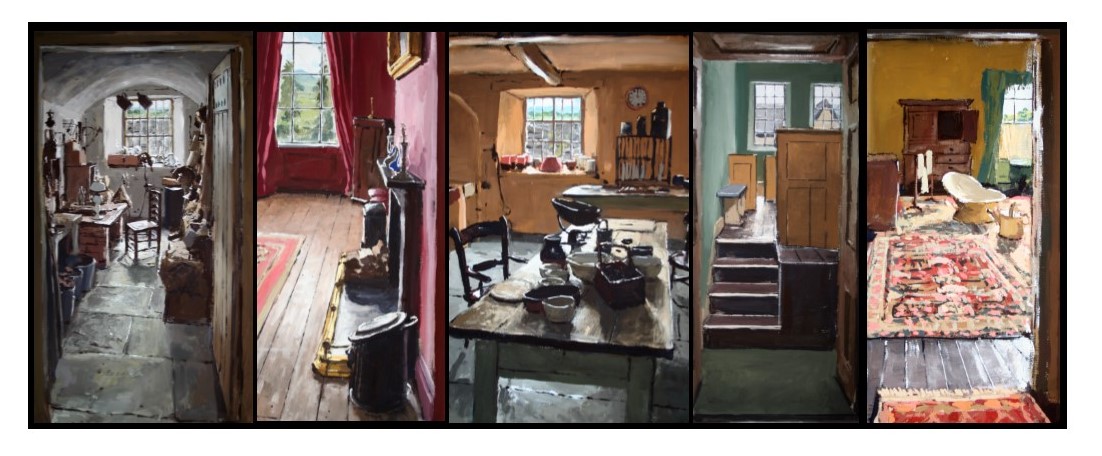The name given to the tight trousers worn by some Regency gentlemen, such as the notorious Beau Brummell and his ‘dandy’ followers, as they showed off their leg muscles.
Local children want to share their town!
PRESS RELEASE 30th May 2013
If you are only six years old, life can take a very different slant. Which shops sell the best bananas or chips? Where can you find good conkers? What are the best books to get from the library? These and many other important issues are looked at in the latest community exhibition to open at The Judge’s Lodging.
Staff at the museum have been busy collaborating with Presteigne Primary school to present Our Town – an exploration of Presteigne through the eyes of its children. The challenge the museum set the school was simple – tell us what you like about the town, what you like to do and why. Each class took up the challenge in a different and innovative way, creating artwork, writing and poetry.
The Nursery and Reception children wanted to share their love of the Warden park area, where they go for regular ‘wellly walks’ studying nature and playing games. Other classes looked at their school, the High Street and even what you would say to tourists to attract them to the town. The older children have written some exceptional poetry, inspired by old photographs in the museum collection, comparing cleverly what the town is like now to the old images they saw.
The next step was for museum staff to interview children from all classes to create a listening station where they chat about the town. The Judge’s Lodging looked through their local history collection and, taking inspiration from the school’s work, chose objects and photographs to compliment the displays. One class, for example, focused on the town’s library, housed in the Assembly Rooms, Broad Street – it may appear to be an odd pairing, but the museum chose a selection of firefighter’s equipment to be displayed alongside the children’s paintings, because the building in question was once the old fire station. Also on display is the sign and photographs from the little town library once run by Mrs Barrett in the front room of a house. All of this is displayed in the temporary exhibition area of The Judge’s Lodging, which was, in turn, part of the town library, until its move up the road in the 1990s.
Curator, Gaby Rivers says ‘It has been wonderful working with the town’s children and something we think that all local people should visit – such an eye-opening, refreshing experience to see the things we look at every day through different eyes.’
Our Town is free to visit and is open with The Judge’s Lodging tues – sun until the end of July.
See the publicity poster for this exhibition here
